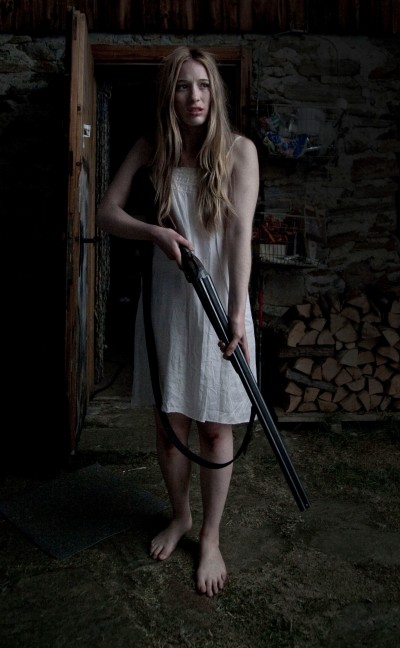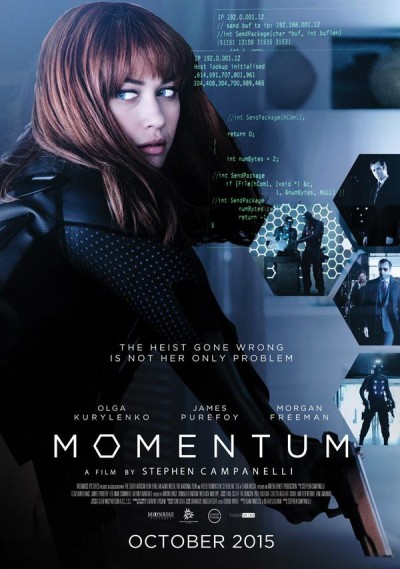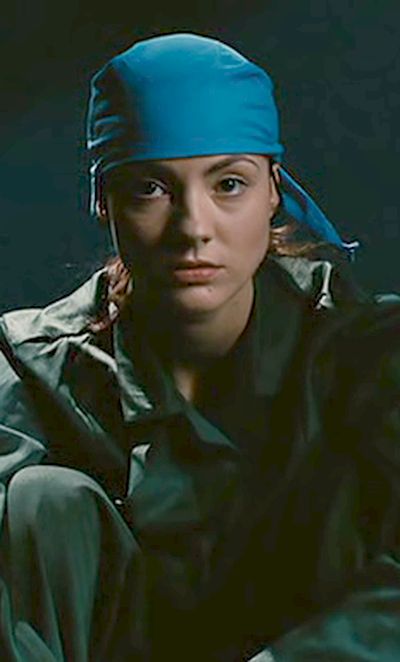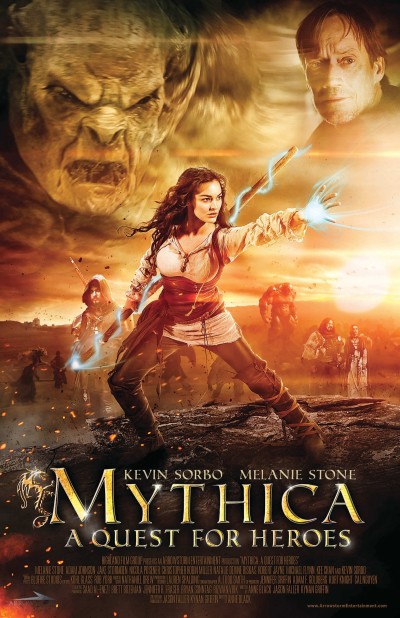★★★
“Tea and no sympathy.”
 Bex (Smurfit) and Dawn (Mitchell) are partners in a market-stall selling coffee and cake, and have dreams of opening a “proper” coffee-shop, but lack the necessary funds to do so. Traditional sources of money, such as banks, turn them down, so when Dawn’s new boyfriend, Jeremy (Slinger) turns out to be an angel investor, it seems too good an opportunity to be true. Which, of course, is exactly what it is, because Jeremy turns out to be the acceptable face of a very brutal loan-sharking operation. Even though they actually refuse his money before accepting it, he insists on them paying for his time, an amount which rapidly escalates out of control. It’s clear Jeremy will stop at nothing to extract payment, and demonstrates exactly that savagery, on both women, as well as their loved ones. Gradually backed into a corner, there’s only one way out for Bex and Dawn; be every bit as ferocious and merciless.
Bex (Smurfit) and Dawn (Mitchell) are partners in a market-stall selling coffee and cake, and have dreams of opening a “proper” coffee-shop, but lack the necessary funds to do so. Traditional sources of money, such as banks, turn them down, so when Dawn’s new boyfriend, Jeremy (Slinger) turns out to be an angel investor, it seems too good an opportunity to be true. Which, of course, is exactly what it is, because Jeremy turns out to be the acceptable face of a very brutal loan-sharking operation. Even though they actually refuse his money before accepting it, he insists on them paying for his time, an amount which rapidly escalates out of control. It’s clear Jeremy will stop at nothing to extract payment, and demonstrates exactly that savagery, on both women, as well as their loved ones. Gradually backed into a corner, there’s only one way out for Bex and Dawn; be every bit as ferocious and merciless.
It probably helps that Smurfit and Mitchell have been friends since their drama school days, and their easy relationship comes over as entirely natural – though non-native British speakers may occasionally want to opt for subtitles! [Hell, I found myself straining my ears on occasion, having clearly been out of the old country for too long…] It’s very much a long, slow descent into hell, with the women on the receiving end for more than 80% of the movie before – and I trust this isn’t much of a spoiler here, given the film opens with a blood-stained Dawn slumped by a bath – finally getting to unleash their fury in a gore-drenched finale.
While certainly satisfying on a visceral level, this comes over as somewhat far-fetched, with neither woman having demonstrated any real tendencies for aggression; the “defending the family” approach only goes so far, not least because it’s the child-less Bex who goes furthest. Not that Jeremy doesn’t deserve it; Slinger comes over as a psychotic version of Simon Pegg, and it’s crucial that the film creates a villain who is both monstrous and believable. Be sure to stick around after the credits for a spectacularly splattery bit of claymation from maverick film-maker Lee Hardcastle, which is just glorious; it almost suggests a sequel where Bex and Dawn turn into a hardcore, British vigilante version of Thelma & Louise.
Must admit, I’d probably have preferred to see that, with the set-up here taking longer than necessary – for example, is there any reason we need to see quite so many scenes of Jeremy and his sidekick extracting payment? Still, the final payback is fully deserved, and gleefully shot by Brunt, leading into a coda which suggests a new, steely determination and “take no shit” attitude as a result of the hell through which the heroines have gone. It suggests an almost Nietzschean fable is being told, that what does not destroy you, in the end will make you stronger and help you achieve your goals. Seems more than slightly morally questionable, although maybe it’s just me!
Dir: Dominic Brunt
Star: Victoria Smurfit, Joanna Mitchell, Jonathan Slinger, Rula Lenska
a.k.a. The Taking












 Just in time for Halloween comes this atmospherically and spooky tale, in which teenager Dora (Rose) has a day – and a night – to remember. It begins with her discovering that she’s pregnant, news which initially causes her to stay home and brood over her future. She changes her mind and texts her boyfriend to come pick her up; he never shows, and instead she finds herself increasingly tormented by young, masked figures, who repeatedly knock on her door. The doctor (Sutherland) makes a house call, only to discover Dora has gone from four weeks to four months pregnant in just a few hours. Dora is also being plagued by nightmarish visions sacrifice, and it becomes clear that those little figures have some very unpleasant plans for our heroine and her baby-to-be.
Just in time for Halloween comes this atmospherically and spooky tale, in which teenager Dora (Rose) has a day – and a night – to remember. It begins with her discovering that she’s pregnant, news which initially causes her to stay home and brood over her future. She changes her mind and texts her boyfriend to come pick her up; he never shows, and instead she finds herself increasingly tormented by young, masked figures, who repeatedly knock on her door. The doctor (Sutherland) makes a house call, only to discover Dora has gone from four weeks to four months pregnant in just a few hours. Dora is also being plagued by nightmarish visions sacrifice, and it becomes clear that those little figures have some very unpleasant plans for our heroine and her baby-to-be.